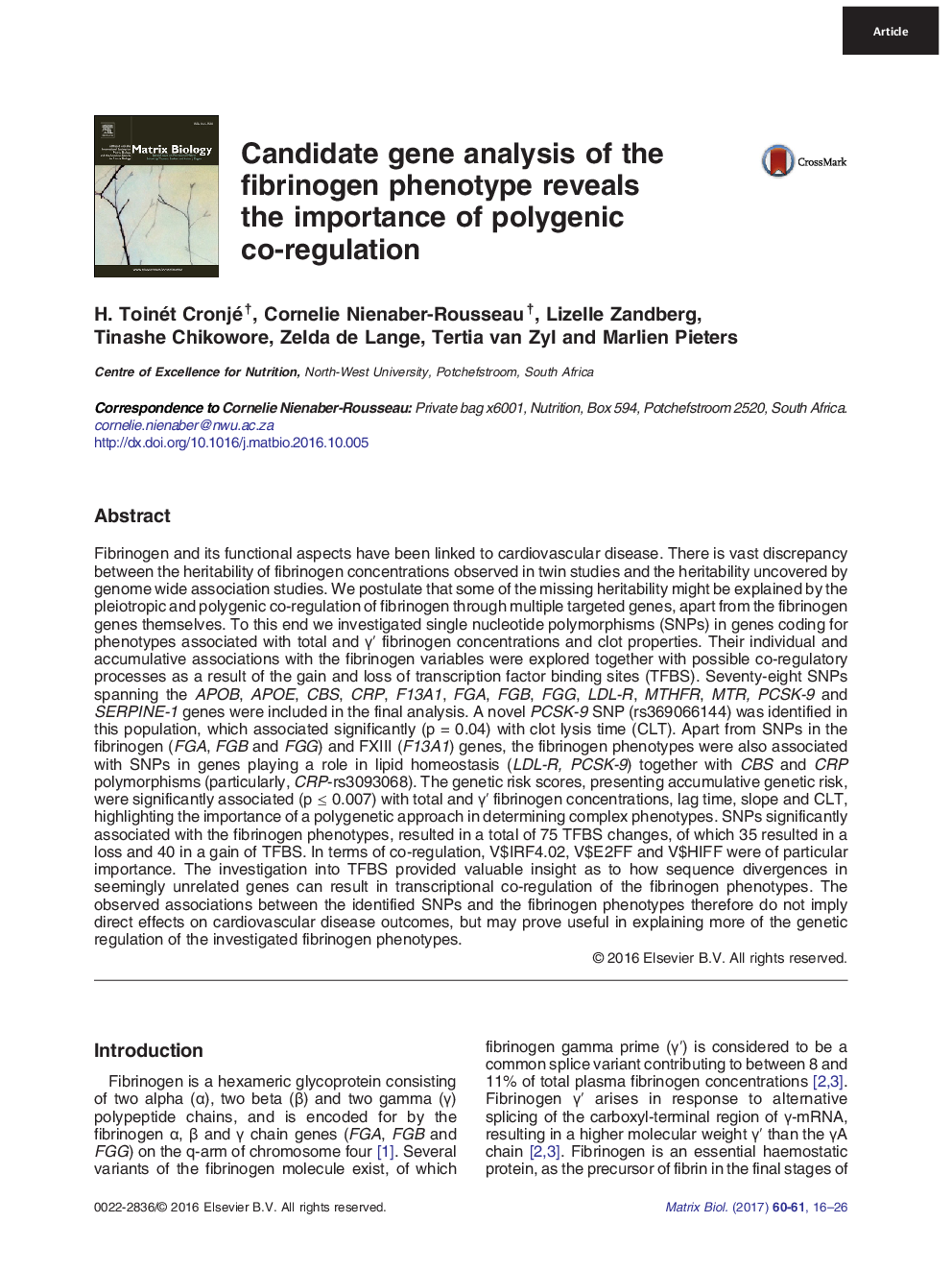| کد مقاله | کد نشریه | سال انتشار | مقاله انگلیسی | نسخه تمام متن |
|---|---|---|---|---|
| 5528560 | 1548001 | 2017 | 11 صفحه PDF | دانلود رایگان |

- Largest candidate gene study related to fibrinogen phenotypes in an African population
- First report on the novel SNP PCSK-9 - rs369066144
- Exploration of the polygenic co-regulation of fibrinogen phenotypes through loss and gain of TFBS
Fibrinogen and its functional aspects have been linked to cardiovascular disease. There is vast discrepancy between the heritability of fibrinogen concentrations observed in twin studies and the heritability uncovered by genome wide association studies. We postulate that some of the missing heritability might be explained by the pleiotropic and polygenic co-regulation of fibrinogen through multiple targeted genes, apart from the fibrinogen genes themselves. To this end we investigated single nucleotide polymorphisms (SNPs) in genes coding for phenotypes associated with total and γⲠfibrinogen concentrations and clot properties. Their individual and accumulative associations with the fibrinogen variables were explored together with possible co-regulatory processes as a result of the gain and loss of transcription factor binding sites (TFBS). Seventy-eight SNPs spanning the APOB, APOE, CBS, CRP, F13A1, FGA, FGB, FGG, LDL-R, MTHFR, MTR, PCSK-9 and SERPINE-1 genes were included in the final analysis. A novel PCSK-9 SNP (rs369066144) was identified in this population, which associated significantly (p = 0.04) with clot lysis time (CLT). Apart from SNPs in the fibrinogen (FGA, FGB and FGG) and FXIII (F13A1) genes, the fibrinogen phenotypes were also associated with SNPs in genes playing a role in lipid homeostasis (LDL-R, PCSK-9) together with CBS and CRP polymorphisms (particularly, CRP-rs3093068). The genetic risk scores, presenting accumulative genetic risk, were significantly associated (p â¤Â 0.007) with total and γⲠfibrinogen concentrations, lag time, slope and CLT, highlighting the importance of a polygenetic approach in determining complex phenotypes. SNPs significantly associated with the fibrinogen phenotypes, resulted in a total of 75 TFBS changes, of which 35 resulted in a loss and 40 in a gain of TFBS. In terms of co-regulation, V$IRF4.02, V$E2FF and V$HIFF were of particular importance. The investigation into TFBS provided valuable insight as to how sequence divergences in seemingly unrelated genes can result in transcriptional co-regulation of the fibrinogen phenotypes. The observed associations between the identified SNPs and the fibrinogen phenotypes therefore do not imply direct effects on cardiovascular disease outcomes, but may prove useful in explaining more of the genetic regulation of the investigated fibrinogen phenotypes.
Journal: Matrix Biology - Volumes 60â61, July 2017, Pages 16-26